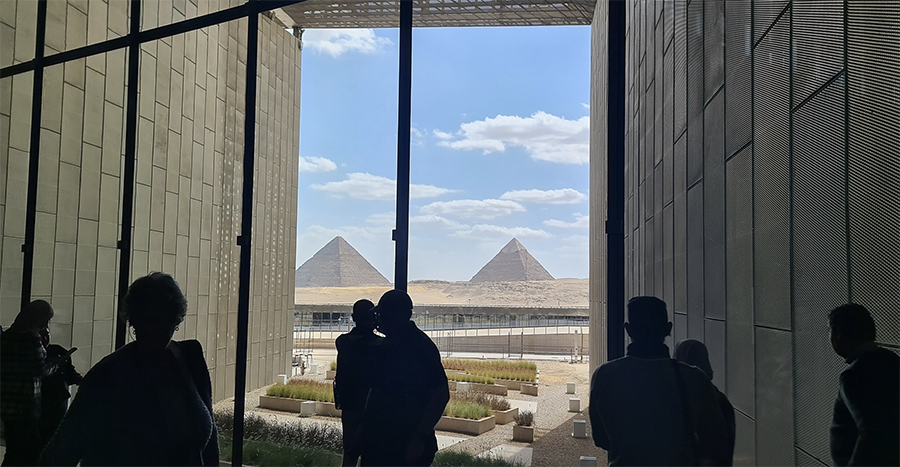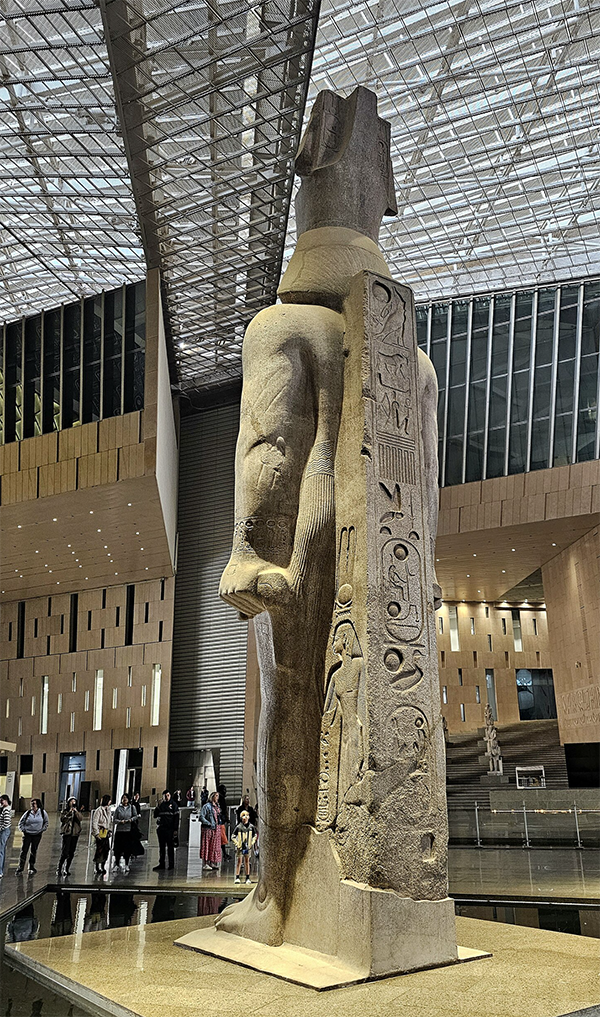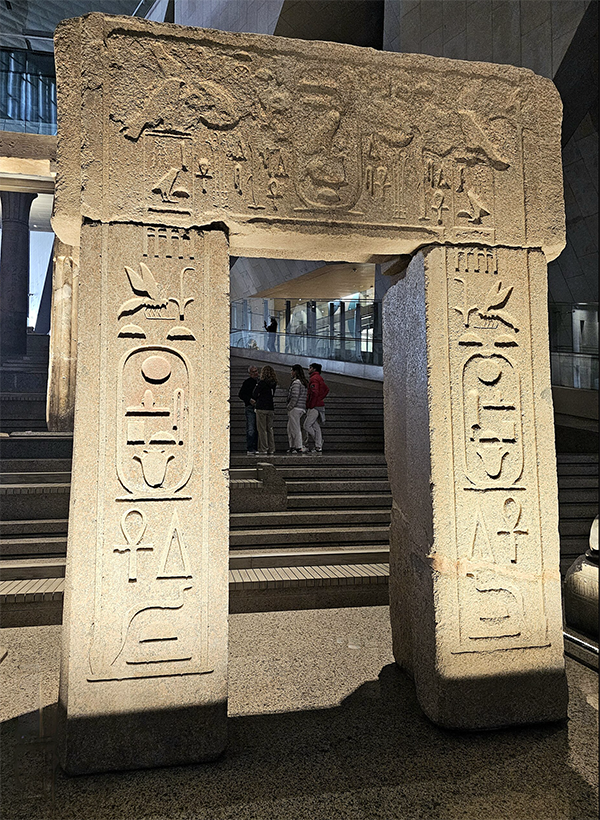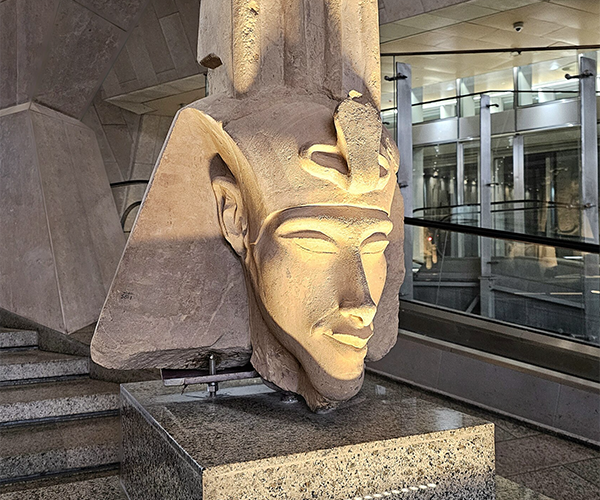Over the last weekend the world was treated to something that has been a long time coming. The opening of the Grand Egyptian Museum – the GEM. I went to the original Museum in Cairo many years ago, as a young fish, and was captivated – but it was old and fusty back then, with many glass display cases covered in dust and containing equally tired and dusty old mummies with bandages quietly decomposing along with the innards of the late lamented departed (very late…).

And now they have a new lease of life! Was it just a coincidence that the TV in NZ was showing a rerun of one of the Mummy films over the weekend? Sadly bearing very little resemblance to the original actual mummies – a truly epicly bad film set in China and Tibet with CGI muscle-bound Yeti fighting the evil Chinese emperor or the Communist party – or some such tosh.

But more to the point, Cairo now has a working GEM and it is wonderful. Designed by Róisín Heneghan and Shi-Fu Peng, neither of whom sound particularly Egyptian, and indeed, are not. Roisin is clearly Irish American and her husband Shi-Fu Peng sounds like he might just be Chinese – i think he is actually from Taiwan. Their practice evidently specialises in Museums and winning big via competitions (what we all aspire to, but no-one ever achieves), having previously gained the following: The Palstinian Museum, The Irish Pavilion at the Venice Biennale, The Giant’s Causeway Visitor Centre in Eire, and the GEM. This competition was held and won way back in 2002, so you’ve got to have long lives to succeed in this world!

Not sure how many of you readers have been to Egypt, but the thing about the Pyramids is that Cairo is massive and is rapidly and continuously encroaching on the views of the big pointy things – look from one direction and behind them all you can see is sand and sky, but look back to where you came from and you can see a city of some 10-20 million people. So the museum design is carefully and cleverly focused on the pyramids with walls obscuring any encroaching city life.

Cairo is, of course, wonderful and terrible at the same time, like any megalopolis worthy of its name, with such features as Heliopolis (truly the greatest Art Deco City in the World, the City of the Sun), and the various mosques, synagogues and churches (it is home to the Coptic Church, which of course is a far older variety of Christianity than either Catholics or Protestants) – the Copts are THE original Christians, and indeed, the very name Egypt is apparently descended from Copt. It also has a river running through it, quite wide and a bit long too – i forget its name.

My friend guiding us through the city was actually descended directly from the Pharoahs, so is of Royal blood, so more Royal than Andrew Mountbatten Windsor, but as we all know, Pharoahs were quite keen on inappropriate inter-cousin marrying and far from appropriate age related couplings, so Andrew would fit right in there. Getting married at 9 or marrying your mother or sister or a goddess with the head of a crocodile was not unusual back then (much like Fergie) so perhaps Charles should just send Andrew straight out to pasture in the desert.

I digress.

But am looking forward to when I can next go to Cairo to see this real GEM !






Funded with half a billion USD from Japan’s overseas aid programme
…
– while its great for Tourists and Tourism, I’m still conflicted about whether there might be better ways o help the poor in Egypt….
also if “grand museums” are ok in the eyes of the international aid providers , what’s next International Airports???
https://www3.nhk.or.jp/nhkworld/en/news/20251102_05/
Well, my guess is that while it does nothign Directly to help the poor, it does / will greatly boost tourism, and Egypt is one country that is almost all financed by Tourism. Massively dependent on it. So, indirectly, probably massive benefit.
One possible reason – when i was there, at least, there was a vast amount of Japanese tourists everywhere. There had recently been some savage islamic attacks against Westerners, much blood spilt etc, so white folk were noticeably absent – but camera-toting Japanese were rather prominent. Presumably that has all changed now, and visitors are probably mainly Chinese and Indian, as they both seem to be highly active in the tourist markets, and collectively, have the largest middle classes in the world these days….